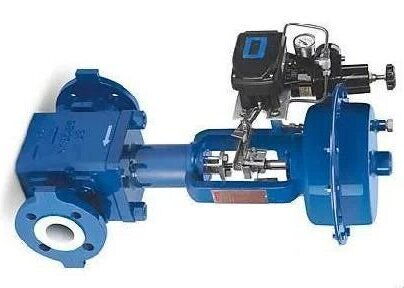Addressing and Preventing Blockages in Lined Control Valves
Lined control valves play a crucial role in industrial production. However, various blockages occasionally occur due to factors such as the characteristics of the medium and operating environment. To ensure the stability of production, it's essential to promptly address and effectively prevent blockages of lined control valves. Here are some diverse methods for handling and preventing these issues.
1. Regular Cleaning
Residues such as welding slag, rust, and debris in pipelines commonly cause blockages in throttle and guide parts of lined control valves. This can result in scratches, abrasions, and indentation on valve components. Typically seen in new systems or after maintenance, it's a prevalent issue. To address it, dismantle the valve, clean it thoroughly, and grind any damaged surfaces. Additionally, flushing out debris and rinsing the pipeline are necessary steps before commissioning.
2. External Flushing
For media prone to precipitation or containing solid particles, in cases of blockage at the throttle or guide locations, external flushing gas and steam can be connected at the bottom plug of the lower valve cover. When the valve is blocked or jammed, opening the external gas or steam valve can complete the flushing work without moving the lined control valve, ensuring normal valve operation.
3. Installation of Pipeline Filters
For small-caliber lined control valves, especially ultra-small flow ones, the throttle clearance is minimal, requiring debris-free medium flow. To ensure this, it's best to install a pipeline filter before the valve to maintain smooth passage. When paired with positioners, the most common issue is air passage blockage. To prevent this, install an air filter and pressure reducing valve on the air source pipeline before the positioner.
4. Increasing Throttle Clearance
When solid particles or debris like welding slag and rust cause blockages in the throttle, consider using throttle components with larger clearances, like window-type or open-type valve cores and sleeves. These components concentrate the throttle area, making fault elimination easier. For single and double-seat valves, switching from a plunger-shaped to a "V"-shaped mouth valve core or a sleeve valve can be effective. For instance, a double-seat valve in a chemical plant experienced frequent jams. Switching to a sleeve valve resolved the issue.
5. Medium Flushing Method
Utilize the flushing energy of the medium itself to flush away easily precipitated and easily blocked substances, thereby improving the valve's anti-blocking function. Common methods include using closed-flow designs, using streamlined valve bodies, and placing throttles in the most vigorously flushed areas. When using this method, attention should be paid to improving the erosion resistance of throttle component materials.
6. Changing Straight-Through to Angle Valves
The straight-through form causes the medium to flow in a reverse S shape, resulting in a complex flow path and more dead zones in the upper and lower chambers, providing a place for medium sedimentation. In contrast, the angled connection makes the medium flow like passing through a 90-degree elbow, with better flushing performance, smaller dead zones, and easier design into streamlined shapes. Therefore, when slight blockages occur with straight-through lined control valves, consider changing to angle valves.
By employing the diverse methods mentioned above for handling and preventing blockages, we can more comprehensively protect lined control valves, ensuring their long-term stable operation and providing reliable assurance for industrial production. Additionally, timely maintenance and regular inspections during daily operations are also important means of ensuring the normal operation of valves.

